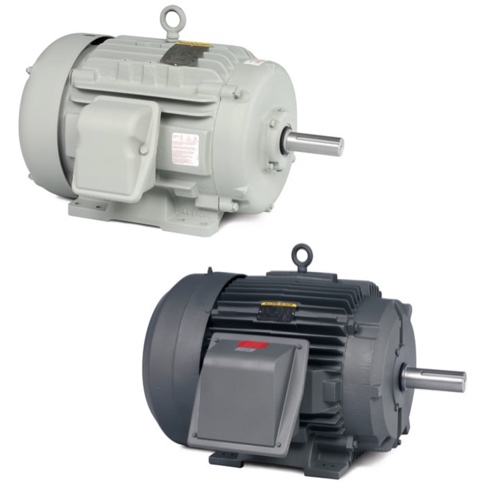Automotive Duty Motors

Automotive duty motors are a specialized type of electric motors designed specifically for use in automotive applications. These motors are built to withstand the demanding conditions and performance requirements of the automotive industry. They are engineered to handle the unique challenges and operating conditions encountered in automotive applications. They are designed to deliver reliable performance and durability in environments with high temperatures, vibrations, moisture, and dust.
Automotive duty motors common applications include: HVAC systems, engine cooling, powertrain components, electric power steering, and more. They are chosen for their performance, efficiency, and ability to withstand the demanding conditions present in automotive environments. With features like cast iron construction, double shielded ball bearings, and U frame motor dimensions, these motors provide reliable and efficient operation in the automotive industry.
More Information about Automotive Duty Motors
Automotive duty motors often feature a robust cast iron construction. Cast iron provides excellent mechanical strength, heat dissipation, and protection against external impacts. This construction enhances the motor's overall durability and reliability.
To ensure reliable operation, automotive duty motors may incorporate double shielded ball bearings. These bearings offer enhanced protection against contaminants, ensuring smooth operation and extending the motor's service life.
Automotive duty motors often adopt the U frame motor dimension. The U frame design provides a compact and efficient motor package suitable for automotive applications. It enables easy integration into space-constrained environments commonly found in automotive systems.
Automotive duty motors are considered severe duty motors due to their ability to withstand extreme operating conditions. They are built to handle high loads, temperature variations, and harsh environmental factors commonly encountered in automotive environments.
Many automotive duty motors are designed as three-phase motors. Three-phase motors provide efficient and reliable operation, offering higher power and improved performance compared to single-phase motors. This makes them suitable for various automotive applications, such as powering compressors, pumps, and other auxiliary equipment.
FAQs
What are shaft slinger ode and de epoxy used for in automotive duty motors?
A shaft slinger is a component used in motors to protect the motor's shaft from contaminants, such as moisture, dirt, or debris. Epoxy coating is a protective layer applied to motor windings and other internal components. It provides insulation and protection against moisture, chemicals, and temperature fluctuations.
Motor Starters, Soft Starters and VFDs
Motor Starters
Motor starters safely start and stop a motor in industrial applications. They are designed with a contactor, overload and circuit protection. They are used when basic motor control is required, where torque on the motor is not a concern and speed control is not needed. The advantages of motor starters include: lower cost, allows for remote operation, allows for monitoring of motor state (with the use of auxiliary contacts) and they are safe and efficient. The disadvantages include: high inrush current that can cause fuses to blow and breakers to trip if the inrush is too high, and the starter will allow a full torque to start the motor which can cause the motor to ramp up to full speed very quickly potentially causing the motor to wear and degrade prematurely.
Soft Starters
Soft starters protect motors from inrush current by gently ramping up the motor to full speed. They provide all of the same functions as a traditional motor starter. The advantages of soft starters include: they are less expensive than a VFD when only startup control is needed, they are a smaller system than a VFD where space is a concern and they prevent unwanted torque upon startup, prolonging the life of the motor. The disadvantages include: they are more expensive than a traditional motor starter and they do not allow for full speed control.
VFDs
A Variable Frequency Drive (VFD) allows for the slow ramp up of a motor during startup and the slowing down of the motor during shutdown. It also allows for full speed control during the entire run cycle of the motor. VFDs provide the same functions as both the traditional motor starters and soft starters. The advantages of VFDs include: full speed control (start, stop and in-between), more custom control and monitoring, energy savings due to efficient motor usage and less wear and tear on the motors. The disadvantages include: they are more expensive and larger than other motor control options and they generate heat that may require fans or AC units.

